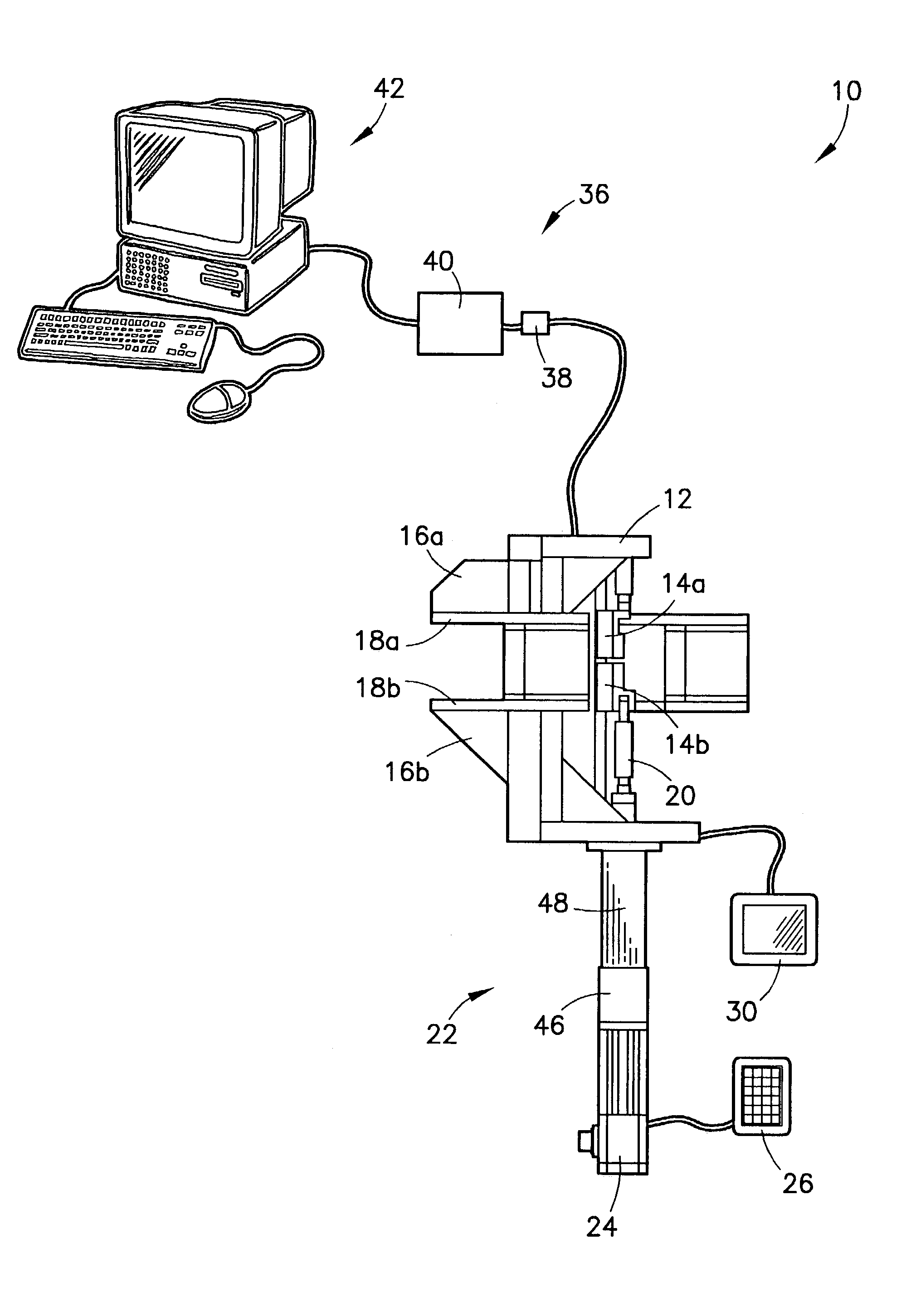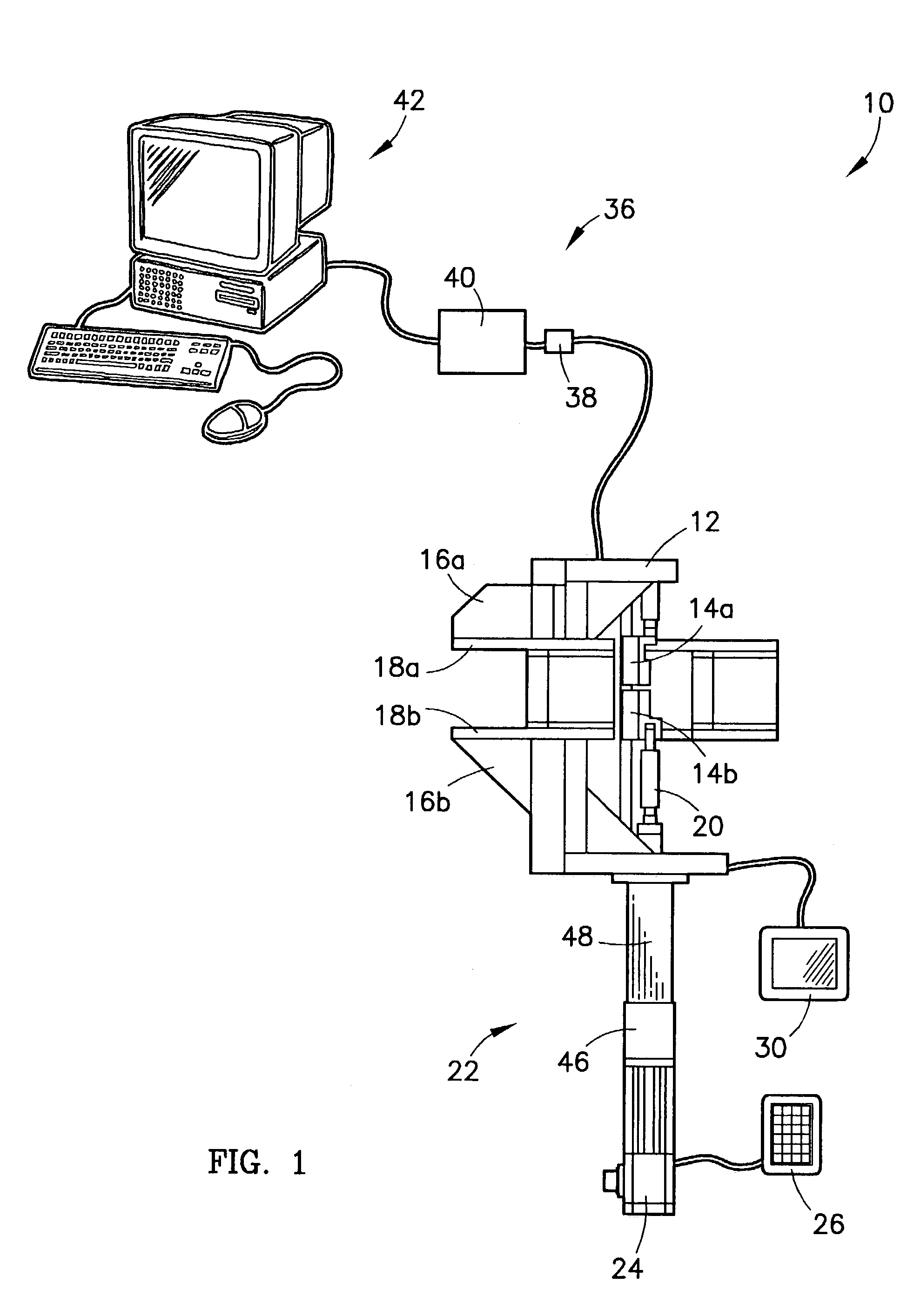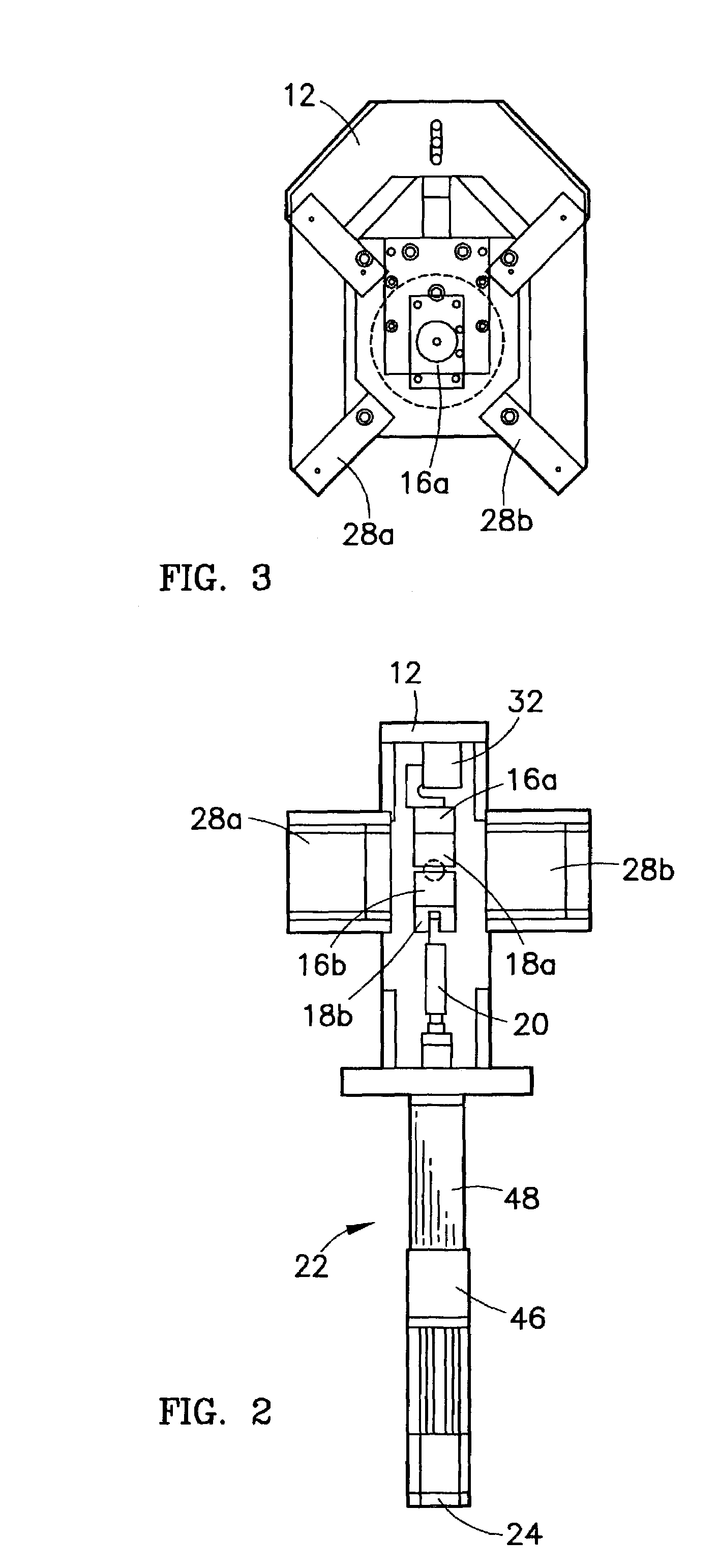Micro-tensile testing system
a micro-tensile and testing system technology, applied in the direction of force measurement, force measurement, optical property variation measurement, etc., can solve the problems of increasing measurement errors, prior art testing systems and techniques are often inability to accommodate and secure test samples, and are suitable for testing large test samples, so as to reduce the deflection or bending of the frame during testing, and achieve the effect of eliminating rotation effects, sufficient rigidity, and reducing the deflection or bending
- Summary
- Abstract
- Description
- Claims
- Application Information
AI Technical Summary
Benefits of technology
Problems solved by technology
Method used
Image
Examples
Embodiment Construction
, below.
BRIEF DESCRIPTION OF THE DRAWINGS
[0021]A preferred embodiment of the present invention is described in detail below with reference to the attached drawing figures, wherein:
[0022]FIG. 1 is a right side elevational view of a preferred embodiment of a testing system of the present invention;
[0023]FIG. 2 is a front elevational view of the testing system of FIG. 1;
[0024]FIG. 3 is a plan view of the testing system of FIG. 1;
[0025]FIG. 4 is a fragmentary view of a portion of the testing system of FIG. 1 magnified to better show gripping support and serrated grip components;
[0026]FIG. 5 is a block diagram showing an exemplary computer program that controls a data acquisition portion of a testing process performed using the testing system of FIG. 1;
[0027]FIG. 6 is a detailed graphical depiction of a measurement portion of the computer program of FIG. 5; and
[0028]FIG. 7 is a screen display of a computer-generated user interface for controlling the testing process.
DETAILED DESCRIPTION ...
PUM
| Property | Measurement | Unit |
|---|---|---|
| thickness | aaaaa | aaaaa |
| thickness | aaaaa | aaaaa |
| thicknesses | aaaaa | aaaaa |
Abstract
Description
Claims
Application Information
 Login to View More
Login to View More - R&D
- Intellectual Property
- Life Sciences
- Materials
- Tech Scout
- Unparalleled Data Quality
- Higher Quality Content
- 60% Fewer Hallucinations
Browse by: Latest US Patents, China's latest patents, Technical Efficacy Thesaurus, Application Domain, Technology Topic, Popular Technical Reports.
© 2025 PatSnap. All rights reserved.Legal|Privacy policy|Modern Slavery Act Transparency Statement|Sitemap|About US| Contact US: help@patsnap.com



